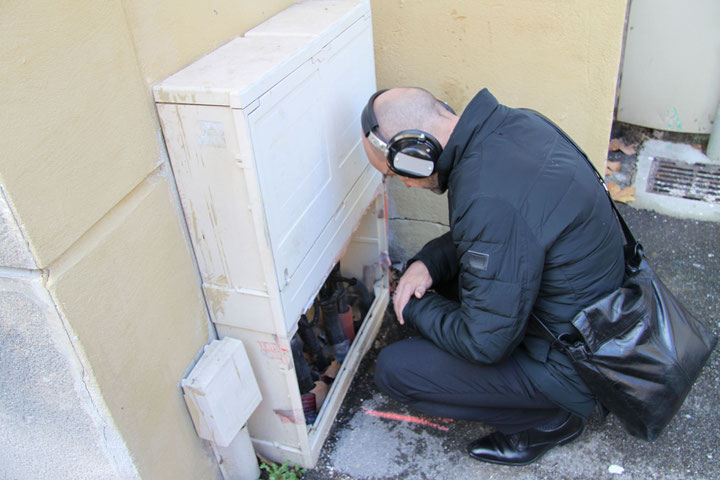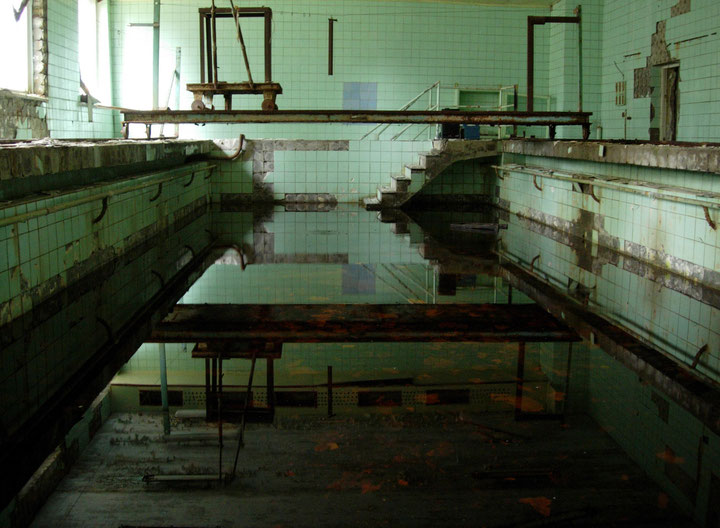Over the past ten years, non-anthropocentric thinking - and in particular object-oriented ontology (OOO) - have been exerting considerable influence on the visual arts. Arguing that things are central to existence and that humans are just one of those things, OOO has inspired artists and curators to decentre the human subject and attribute agency to the object. Less known but similar in tenor are the practices of a number of artists working with sound: these artists decentre the listener, explore sounds beyond the range of human hearing or access anonymous sonic flows, pointing the way forward for a non-anthropocentric art of sound.
Early examples of such sonic practices are to be found in the works of American composer Alvin Lucier, even though they may not have been considered in these terms at the time. For his most influential work, I am Sitting in a Room (1970), Lucier recorded the sound of his speaking voice, playing it back into the room again and again till the resonant frequencies of the space reinforced themselves, articulated by his speech. Here, as in other works, Lucier thinks of sounds not so much as high or low musical notes produced for the listener's enjoyment as in terms of measurable wavelengths - which suggests a less human-centred aesthetics. Furthermore, as Douglas Kahn has pointed out , Lucier's work is concerned not only with immersion and its focus on the listener, but also with propagation, i.e. the distance that a sound has travelled from its source and the extent to which it has been altered by the intervening medium. Unlike immersion, propagation decentres the listener, affirming the primacy of sound.
Today, artists such as Jacob Kirkegaard are reworking these practices. For AION (2006), Kirkegaard appropriated Lucier's technique, except that instead of recording his own voice, he recorded the silence in each of four abandoned spaces inside the exclusion zone around the former nuclear power plant in Chernobyl, Ukraine. In each case, he started the recording and promptly left the room, leaving the microphone to pick up whatever sounds might occur. The hums featuring in the final piece are constituted by the imperceptible noises that occurred during his absences, which were then played back into the different spaces several times. Heterogeneous and uncomposed, these noises are the normally inaudible voices of the abandoned spaces themselves.
More than just individual works or artists however, non-anthropocentrism is also gaining ground among philosophers and theorists of sound. Take the philosopher Christoph Cox , who posits a sonic materialism that defines sound as a disorderly anonymous flux. As sources, he cites Schopenhauer and Nietzsche, but also John Cage - for whom sound and music constitute an impersonal flow that precedes and exceeds human participation in it. Works such as Christina Kubisch's Electrical Walks (2004 - present), in which listeners don headphones that enable them to access the electromagnetic signals coursing through contemporary cities, exemplify such a flux.
The idea that we should not interpret the world solely in terms of human values and experiences also looms large in the work of media theorist Eleni Ikoniadou. In her book The Rhythmic Event: Art, Media, and the Sonic (2014), she shows how certain artworks can lead to the suspension of conscious perceptual activity and trigger feelings unrelated to the artist's or participant's intentions. These processes are exemplified by Marie Sester's ACCESS (2003 - present), an interactive work that uses Audio Spotlight technology to create a narrow beam of sound far more directive than a loudspeaker. When the invisible eye of a camera perceives a body in the space where the work is installed, a spotlight falls on that person. Not only is the person disoriented by the spotlight, but she also hears whispered commands, encouragements or threats uttered by voices that appear to be speaking inside her head. For Ikoniadou, the spectator's actions in these circumstances may be understood as involuntary and as occurring prior to conscious experience. The work explores these liminal states triggered by the sonic, which point to what Ikoniadou describes as "the prospect of a subjectless subjectivity and to something altogether nonhuman in human experience".
Finally, the philosopher Timothy Morton draws on examples of sound works to explore the current shift away from anthropocentrism towards environmental concerns. Formulating a new approach to ecological critique, he puts forward the concept of the hyperobject, which he defines as non-local and massively distributed in time and space with respect to humans, and as comprising such long-lasting entities or processes as the Solar System, the biosphere or global warming. According to Morton, art can address hyperobjects, but when it does, it should not focus on the consequences of non-ecological behaviour - as in the case of much environmentally-oriented art. Instead it should be thought of as a tuning to the hyperobject, a means of increasing one's awareness of such phenomena.
An example of an artwork addressing hyperobjects is JLiat's found sound piece bravo, which consists of recordings of the hydrogen bomb tests carried out in the Pacific in 1954. For Morton, the force of this sound invites a feeling of concern and co-existence. Co-existence is also among the themes of Francisco Lopez's La Selva (1998), a recording of the sound environment of a tropical rainforest in Costa Rica. Far removed from atmospheric ambient recordings of forest sounds, the work is a dense, immersive tapestry of noises of rain, waterfalls, insects, frogs, birds, mammals and even plants, that invades the listener's personal space, bringing her right up close to the non-human. In terms of non-anthropocentrism, both the theory and the practice of sound art are proving a fertile terrain.
1 Douglas Kahn, "Alvin Lucier: I Am Sitting in a Room, Immersed and Propagated", in Pnina Avidar, Raviv Ganchrow and Julia Kursell, "Immersed - Sound and Architecture", Oase no.78, NAi Publishers, Rotterdam, 2009, p. 26.
2 See Christoph Cox, "Von Musik zum Klang: Sein als Zeit in der Klangkunst", ("From Music to Sound:Being as Time in the Sonic Arts"), Sonambiente Berlin 2006: Klang Kunst Sound Art, Helga de la Motte-Haber, Matthias Osterwold, Georg Weckwerth (dir.), Kehrer Verlag, Heidelberg, 2006, pp. 214–23.
3 Eleni Ikoniadou, The Rhythmic Event: Art, Media, and the Sonic, MIT Press, 2014, p. 66.
4 Timothy Morton, Hyperobjects: Philosophy and Ecology after the End of the World, University of Minnesota Press, 2013, p. 1.



